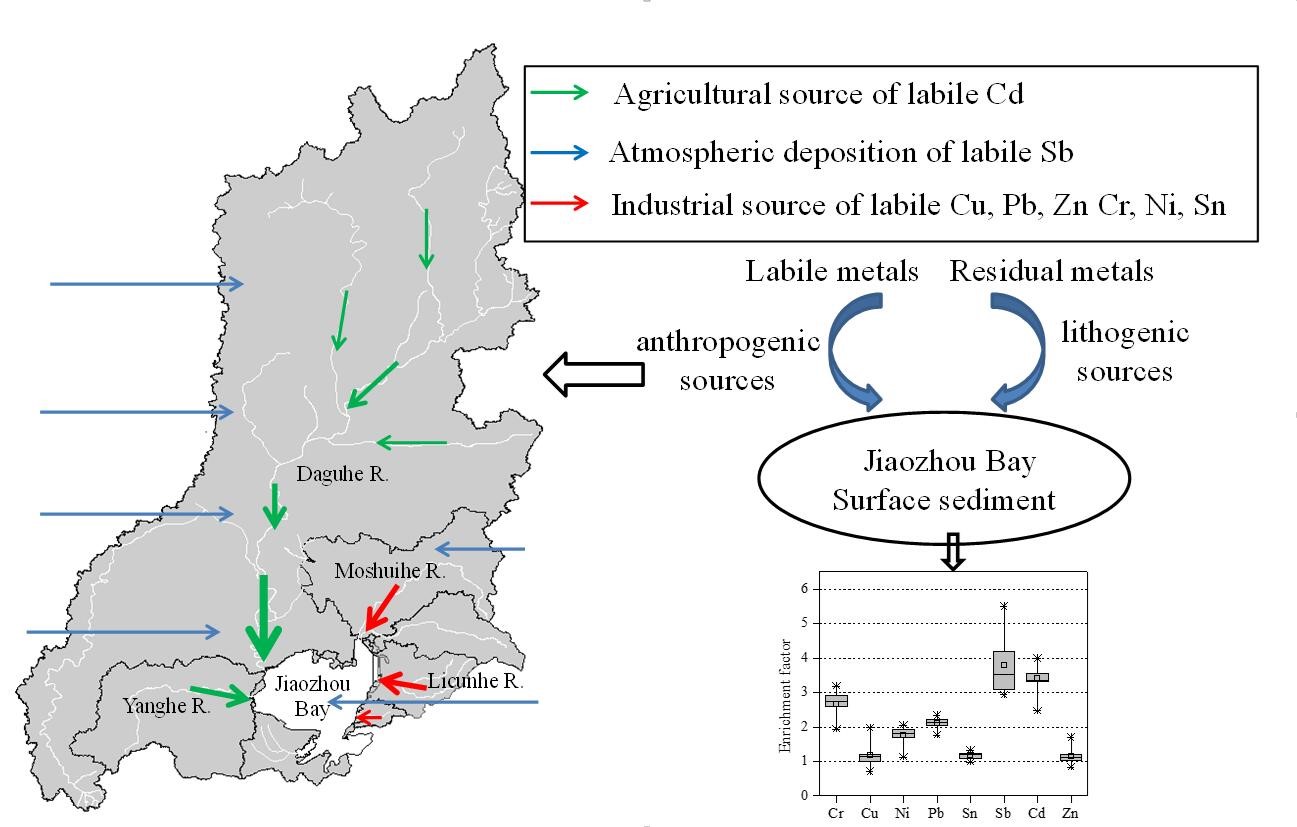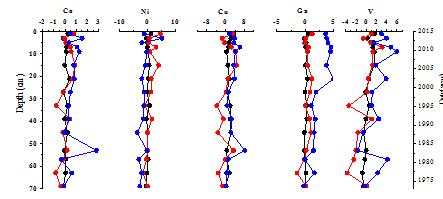Recently, the research team leading by Professor Jinming Song from IOCAS have made progress in reconstruction of environmental evolution for anthropogenic influenced bays using trace elements in sediments. Relevant 4 articles were published in top journal of Marine Pollution Bulletin in marine environment reasearch.
The total and chemical speciation of trace elements in size-fractionated surface and core sediments were studied from Jiaozhou Bay and Daya Bay, two typical bays influenced by continually enhancing anthropogenic activities in coastal regions of China. Specific indicators responding to different anthropogenic disturbances were also identified. The labile fractions of different trace elements could present as indicators for different anthropogenic activities, such as the labile fraction of Cu, Pb, Zn Cr, Ni and Sn could be identified as indicators for industrial activities, Cd for agricultural activities, while Sb was mostly related to regional coal combustion. In addition, the coarse size fraction (> 63 μm) had higher anthropogenic fluxes and enrichment factors (EFs), and therefore played an important role in the enrichment process of anthropogenic trace elements. Meanwhile, the acid soluble form in this fraction were closely linked to economic development and environmental governance in the drainage basin.

Fig. 1 Sources of trace elements from surface sediments of Jiaozhou bay

Fig. 2 Vertical/temporal changes of anthropogenic flux (μg·cm-2 ·year-1) of trace elements in three size fractions in Jiaozhou Bay
The variations of trace elements in cores sediment were also studied to reconstrcut the historical evolution characteristics in those two typical bays and the anthropogenic contributions to trace element were also quantitatively distinguished. Over 40.0% of Cu and As were from anthropogenic input in Jiaozhou Bay since the 1950s. For Daya Bay, the development of environment in the past 100 years basically experienced three stages. Before 1980s, the concentrations of trace elements were basically at the background level with no environment pollution. During 1980-2000, contamination of trace elements became serious but after late-2000s, the sediment quality had been radically improved. Trace element in nearshore sediment of Daya Bay were all closely related with import of anthropogenic and/or terrestrial material, whereas those in offshore were likely to be related with joint influence of the anthropogenic activities and the natural processes.

Fig. 3 The accumulation flux and anthropogenic contribution of trace elements in Jiaozhou Bay

Fig. 4 Vertical/temporal changes of trace elements in sediments of Daya Bay
This study was supported by the National Program on Key Basic Research Project of China (973 Program) (2015CB452901), Aoshan Talents Program of Qingdao National Laboratory for Marine Science and Technology (ASTP2015-OS13), and the Joint Fund of National Natural Science Foundation and Shandong Province for Marine Science Research Centers (U1606404).
Article links:
Liang, X., Song, J., Duan, L., Yuan, H., Li, X., Li, N., Qu, B., Wang, Q. 2018. Heavy metals in surface sediments of Jiaozhou Bay, China: Sources and risk assessment based on fractionation. Marine Pollution Bulletin. 128: 548–556.
Liang, X., Song, J., Duan, L., Yuan, H., Li, X., Li, N., Qu, B., Wang, Q. 2018. Metals in size-fractionated core sediments of Jiaozhou Bay, China: Records of recent anthropogenic activities and risk assessments. Marine Pollution Bulletin. 127:198–206.
Kang, X., Song, J., Yuan, H., Li, X., Li, N., Duan, L. 2018. Historical trends of anthropogenic metals in sediments of Jiaozhou Bay over the last century. Marine Pollution Bulletin. 135: 176–182.
Qu, B., Song, J., Yuan, H., Li, X., Li, N., Duan, L. 2018. Intensive anthropogenic activities had affected Daya Bay in South China Sea since the 1980s: Evidence from heavy metal contaminations. Marine Pollution Bulletin. 135: 318-331.
|
|

Address: 7 Nanhai Road, Qingdao, Shandong 266071, China
Tel: 86-532-82898902 Fax: 86-532-82898612 E-mail: iocas@qdio.ac.cn


